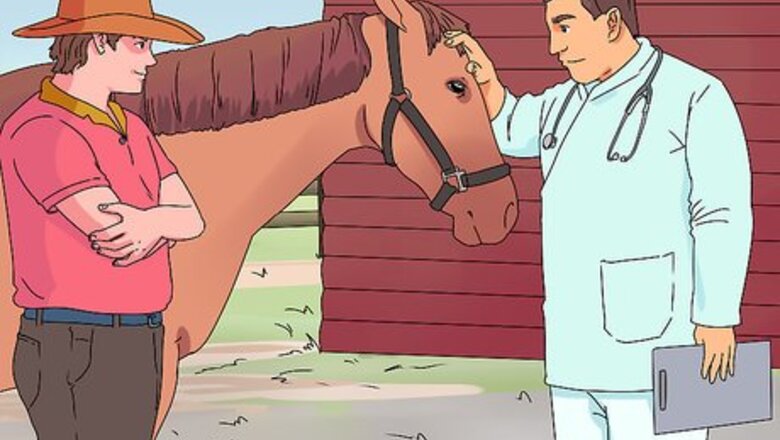
views
Getting Medical Treatment
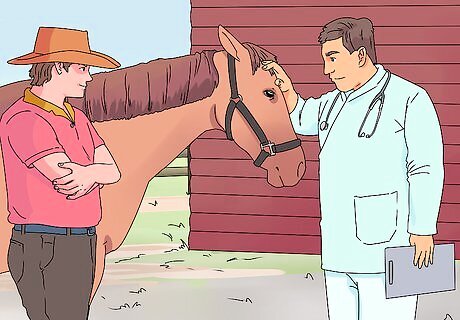
Get your horse examined by a veterinarian. The vet will look at the eye and socket for any kind of foreign bodies (such as a foxtail). The vet may also apply a special dye called fluorescein which reveals any damage to the surface of the eye. To see the eye in greater detail, the vet will use an ophthalmoscope which has a series of lens to magnify both the surface and the deeper chamber of the eye. To perform a thorough eye exam, the vet may need to dilate your horse's eyes.
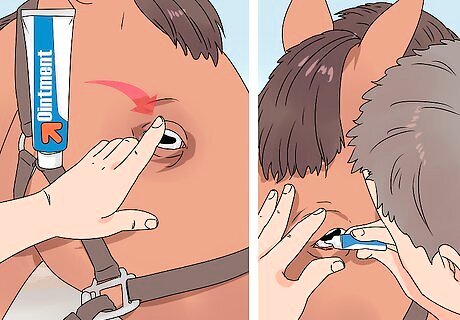
Learn how to apply common types of medications. Once your vet has diagnosed your horse, a medication (like an antibiotic) will probably be prescribed. This will probably be an in the form of drops or ointment. Drops may be helpful for several days because they can relieve pain, but your horse will need to be in a shaded area or have a fly mask since drops can dilate the pupils. Understand how to correctly apply these medications to your horse's eye: Apply an ointment 2 to 6 times a day, as recommended by the vet. Run the ointment over the top of the eyelid to make sure it cleans the whole eye. Apply eye drops (like atropine) by pulling up on the skin above the eye to widen the opening. Prepare the ointment by squeezing a small amount to the end of the tube. Approach the horse's eye from behind so that he doesn't see it coming towards him. Use a finger and thumb on one hand to open the eyelid and spot the drop against the inside of the lower lid. You can also drop it onto the surface of the cornea. Let the horse close his eye, which will naturally spread the ointment over the surface.

Treat corneal ulceration. If the vet diagnoses your horse with a corneal ulceration, the vet will probably numb the surface of the eye using local anesthetic drops. The vet will carefully rub the surface with a sterile cotton swab to remove any dead tissue that's stuck to the eye. Removing the tissue will speed up healing. The eye will be rinsed with sterile saline and the vet will probably prescribe antibiotic eye drops. You'll need to apply them 2 to 6 times a day (depending on the medication) for around 7 to 10 days. A corneal ulceration is often caused by grit or a branch rubbing against the surface of the eye. This creates a divot on the surface of the eye that the vet can see during the examination. If not treated, corneal ulcerations may wear down into the eye.
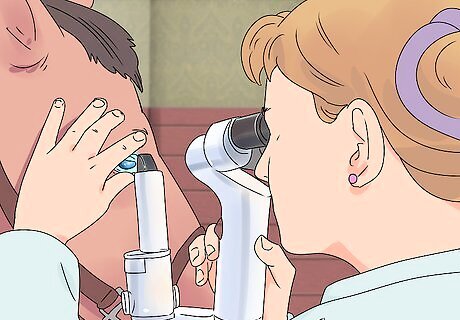
Treat Equine Recurrent Uveitis (ERU). The vet may diagnose your horse with ERU or "Moon Blindness" which causes the pupil to spasm and contract. While there's no cure for ERU, treatment will focus on handling the symptoms. The vet may prescribe antibiotic drops to put in once or twice a day to dilate the pupil and stop the painful spasms. You'll probably want to keep your horse in a shaded area and avoid riding him while the pupil is dilated, since this can interfere with his vision. Steroid drops may also be prescribed to reduce inflammation. Pain medication may also be prescribed. ERU is an inflammation in the uvea within the eye, which is made up of the iris, the fibers that hold the lens in place (ciliary body), and the lining of the eye. It's a painful condition which prevents the eye from functioning properly. This keeps the horse from focusing and can make it difficult for him to see.
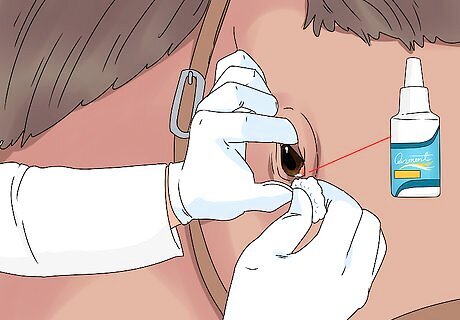
Treat conjunctivitis. The vet will treat this bacterial infection by keeping the eye clean. Disposable cotton pads are soaked in saline and wiped over the eye. The vet will prescribe an antibiotic ointment to be applied once or twice a day for 7 to 10 days. Conjunctivitis is a bacterial infection of the surface parts of the eye. This can be hot, itchy, and painful for the horse, creating a lot of discharge from the eye. This discharge can gum the eyes shut, making it more attractive for flies to lay their eggs there. To prevent fly infestation, it's important to keep the eyes clean.
Caring For Your Horse's Eyes
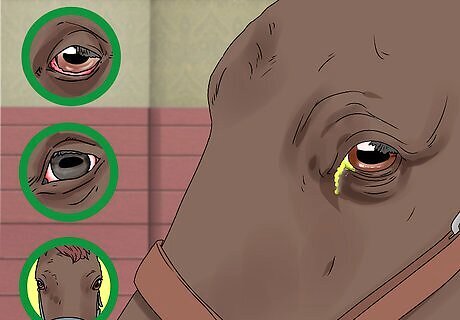
Distinguish between a healthy and diseased eye. Both eyes should appear symmetrical when you look at the horse head on. Both eyelids should open to the same extent, the whites of the eye should be white, the pupils (dark central part within the eye) should both be the same size, and the eyes should be clean, clear and bright. Look for the following, which may indicate problems with the eyes: Swelling of just one eye or eyelid A red eye or eye with angry blood vessels in what should be the white part of the eye One pupil that's larger than the other Jumps or lines in the surface of eye, which could indicate a scratch or ulcer Yellow or green discharge (Occasionally, when it's very dusty the eye may wash dust out of the eye in which case you will see a clear goopy discharge in the inner corner of the eye. This can be normal.) Squinting or avoiding sunlight An eye that looks red, cloudy or sunken An eye that the horse keeps closed An excessive amount of tear fluid, such that the eye is constantly watering The whites of the eyes are puffy and swollen The surface of the eye doesn't look clear and shiny but is dull or glazed with white
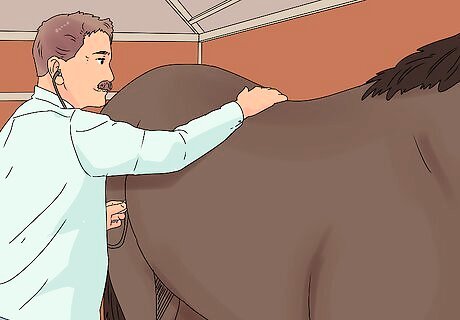
Realize the importance of getting medical attention. If you notice anything unusual about your horse's eyes, call the vet. There are many potential causes of eye problems in horses, from allergy, trauma, and debris, as well as other diseases. These need to be professionally diagnosed and the correct treatment started, in order to preserve the horse's eyesight. Neglecting to act or ignoring the horse has a problem could endanger the horse's sight. Be aware that some conditions may require lifelong treatment, like Equine Recurrent Uveitis. The sooner you start caring for your horse's eye conditions, the better chances he has of recovering or living comfortably.
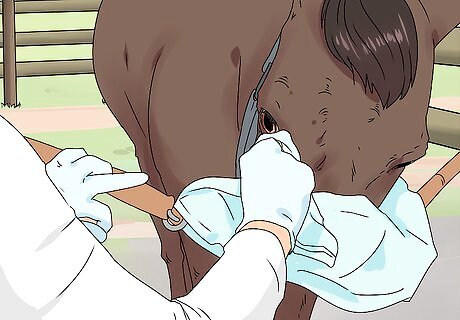
Make your horse more comfortable. Before the veterinarian arrives to examine your horse, take a moist, clean cloth to remove any discharge from around the eye. You should also shield the horse from direct sun. Put blinders or a fly mask on your horse to help protect the horse from direct sunlight. Alternately, you can move the horse inside. All of these things can make your horse more comfortable and reduce strain on troubled eyes. Some conditions such as recurrent equine uveitis are aggravated by sunlight and UV, so keeping the eyes protected is important.
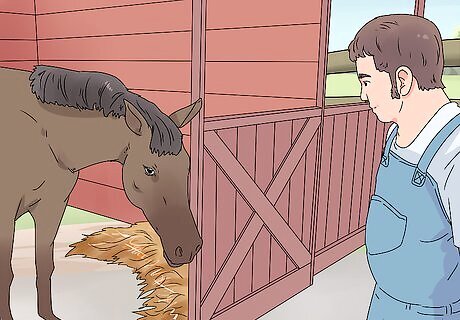
Monitor your horse's progress. If the eye seems to worsen or doesn't improve within several days, it's best to have your vet come back out for an exam. Ulcers can sometimes increase in size, and even threaten the inner part of the eye if not treated aggressively from the beginning of treatment. Don't use ointments or medications without your veterinarian's approval. When it comes to treating your horse's eyes, the vet is the most knowledgeable person to quickly care for your horse.










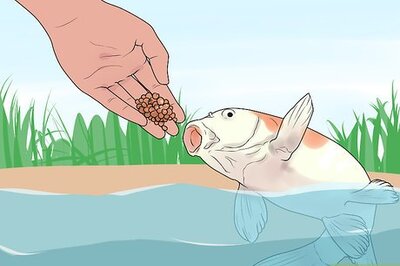
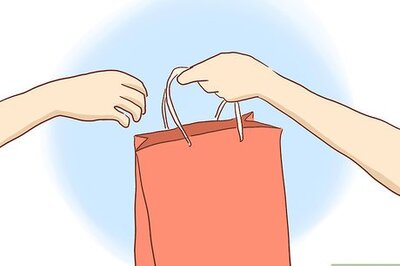




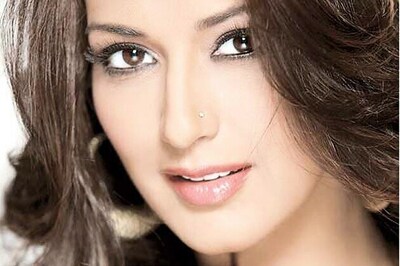

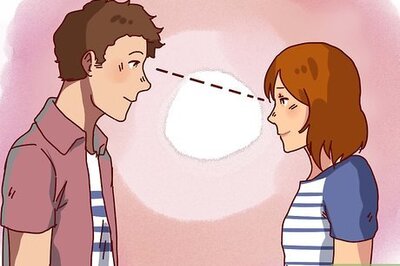
Comments
0 comment